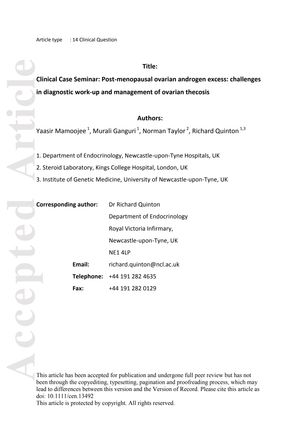TLDR The conclusion is that removing both ovaries is the best treatment for excess male hormones in postmenopausal women, with medication as another option, and managing insulin resistance is important for diagnosis and treatment.
The document presented a case of a 72-year-old woman with postmenopausal hyperandrogenism, characterized by hirsutism, androgenic alopecia, and voice deepening. Elevated serum testosterone levels and imaging suggested a benign ovarian cause, which was confirmed by a GnRH suppression test. The patient was treated with spironolactone and later underwent bilateral salpingo-oophorectomies, resulting in normalized hormonal profiles and improved hirsutism. The document highlighted the diagnostic challenges in distinguishing between ovarian hyperthecosis (OH) and virilizing ovarian tumors (VOTs), noting that while certain tests can identify the source of androgen excess, they cannot reliably differentiate between OH and VOTs. It also discussed the limitations of the low-dose dexamethasone suppression test in insulin-resistant women and the potential of steroid metabolomic profiling as a future diagnostic tool. The document concluded that bilateral laparoscopic salpingo-oophorectomy is the preferred treatment for postmenopausal hyperandrogenism, with medical therapy as an alternative or interim measure, and emphasized the importance of addressing insulin resistance for diagnostic and therapeutic purposes.
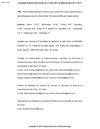 27 citations
,
April 2017 in “European journal of endocrinology”
27 citations
,
April 2017 in “European journal of endocrinology” The research found that MRI and certain hormone levels can help tell apart ovarian tumors from hyperthecosis in postmenopausal women, but tissue analysis is still needed for a definite diagnosis.
84 citations
,
September 2014 in “European journal of endocrinology” Doctors should check for serious tumor causes of high androgen levels in postmenopausal women and more research is needed on this condition.
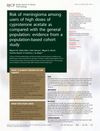 88 citations
,
May 2011 in “British Journal of Clinical Pharmacology”
88 citations
,
May 2011 in “British Journal of Clinical Pharmacology” High doses of cyproterone acetate are linked to an increased risk of developing meningioma.
502 citations
,
February 2008 in “The Journal of Clinical Endocrinology & Metabolism” Treat significant hirsutism with medication and hair removal; use birth control pills first, adding antiandrogens if needed.
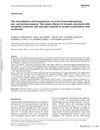 14 citations
,
January 2008 in “Gynecological Endocrinology”
14 citations
,
January 2008 in “Gynecological Endocrinology” High levels of male hormones in women without tumors are linked to metabolic problems and can be treated with metformin.
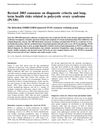 4025 citations
,
December 2003 in “Human Reproduction”
4025 citations
,
December 2003 in “Human Reproduction” The 2003 consensus updated PCOS diagnosis criteria and linked PCOS to higher risks of diabetes and heart problems, recommending lifestyle changes to lower these risks.
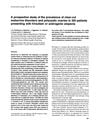 135 citations
,
August 1994 in “Clinical Endocrinology”
135 citations
,
August 1994 in “Clinical Endocrinology” Most women with hirsutism or androgenic alopecia had polycystic ovaries, especially if they had irregular periods.
 27 citations
,
April 2017 in “European journal of endocrinology”
27 citations
,
April 2017 in “European journal of endocrinology” The research found that MRI and certain hormone levels can help tell apart ovarian tumors from hyperthecosis in postmenopausal women, but tissue analysis is still needed for a definite diagnosis.
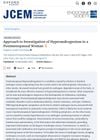 November 2022 in “The Journal of Clinical Endocrinology and Metabolism”
November 2022 in “The Journal of Clinical Endocrinology and Metabolism” Postmenopausal hyperandrogenism, a condition with symptoms like increased hair growth and acne, is usually caused by PCOS but can also be due to other factors. It's diagnosed by checking testosterone levels and treated either by removing the adrenal tumor or through antiandrogen therapy.
 14 citations
,
January 2008 in “Gynecological Endocrinology”
14 citations
,
January 2008 in “Gynecological Endocrinology” High levels of male hormones in women without tumors are linked to metabolic problems and can be treated with metformin.
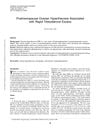 1 citations
,
January 2018 in “Journal of Gynecologic Surgery”
1 citations
,
January 2018 in “Journal of Gynecologic Surgery” Removing both ovaries can treat increased testosterone and related symptoms in postmenopausal women with ovarian hyperthecosis.
 1 citations
,
September 2020 in “Endocrinology, Diabetes & Metabolism Case Reports”
1 citations
,
September 2020 in “Endocrinology, Diabetes & Metabolism Case Reports” The conclusion is that thorough investigation of hypertension and hormonal dysfunctions is important, and there may be a link between these conditions and cancer.
